|
Initial Thoughts The Aquarian H2a XLR is a purpose built underwater microphone designed to connect to any standard audio system via an XLR connector with phantom power. The entire unit is sealed against water and can be purchased with a range of cable lengths to allow recording at greater depths. The average unit comes with a 9 meter cable, but it is possible to get cables as long as 300 meters. My H2a came about through somewhat unusual circumstances. I had purchased an Aquarian H3 years ago but I felt it had never really worked as I expected. At the time I was not in a position to do much about it as soon after I purchased it I relocated to Japan for three years. When I returned to Australia, on a whim I contacted the manufacturer to see if it was possible to get the unit fixed at my expense. The owner of the company replied and indicated he was very sorry that I had not had a positive experience with the H3 and offered to help me with a new unit at cost price. Considering my original unit was well out of warantee this was really good service. I had always wanted the hydrophone to work well as I had lots of ideas for using it, so the opportunity to get a replacement had me really excited. On the day it arrived I had the H2a in the water within about 30 minutes, (it helps when you live 300 meters from the bay) The sound was great, even if all I could hear was the clicking of Krill in the bay. The point was that it was clean, clear and undistorted. Over the following few days I recorded a variety of boats and other nearby water vehicles. The unit is exactly like any microphone except it has a lead attached to it that happens to be 9 meters long and waterproof. I also bought the contact adapter that covers the head of the microphone and allows it to be used as a contact mic. I still haven't gotten around to recording my heartbeat yet, but that is on the list. Technical Data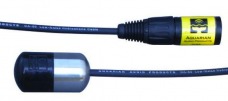 Later Observations After some use the H2a still stands up as being an effective underwater recording device. I am not aware of the complete range of other hydrophones that are available, but I do know that one on the market costs around $6000, so at about $170 US the H2a is cheap enough to get one just because it might be fun to play with occasionally, let alone for serious underwater sampling. It captures crisp good quality sound and is generally very easy to use. The only real issue I have is that the model I have has a 9 meter cable which is great for getting access to deeper water or further out from the bank, but I find the cable gets tangled often and I think I will need to start using a line reel or something similar to wrap it around when I am not using it. The cable is permanently attached to the mic so obviously I need to be careful not to allow it to bend or twist too much.'This is just the nature of having nine meters of cable and is not a specific issue with the H2a So far I have found the contact mic attachment to be less usable than I had hoped. It will pick up fairly strong vibrations and transmit them to the mic diaphragm, but I have found that it struggles with weaker vibrations. It certainly can't capture the blood moving under the surface of your skin which one of the previous Aquarian mics was capable of. However this ability in the earlier mics was due to them having a far more exposed diaphragm so its probably a good thing. I have captured some fantastic material with this microphone from being dragged behind a moving boat to recording compressed air being released underwater. For the price this is a must have for any sound designers collection, it simply opens up too many opertunities for new and interesting sounds to left out. In the real world One of the techniques I use for sound design is to create sounds in real-time from many raw sound sources. The H2A is very useful for this method as I can collect a selection of raw material that in itself is not very spectacular, but when combined to create complex sound events can produce great results. The following sound event has been created out of simple sounds such as throwing a heavy object into the water, or recording the bubbles released from a compressed air can. Individually the sounds are all available within the library. The composite underwater explosions created as a result of combining these simple elements are also included in the library. The H2A is capable of capturing a great range of material recording in an underwater environment. Verdict Good Excellent unit for the price Solid build It does what it is designed to do Bad Longer cable lengths can get difficult to manage Price US $169.00 -3 meter cable (10 Feet) Website www.afabsound.com/ Initial Thoughts The H4N is Zoom's third entry into the hand-held digital recorder market. As the replacement for the H4 it has some issues to overcome, but also a good solid background of a well designed and useful features. Zoom has a reputation for excellent features in low priced units and it appears the H4N will only strengthen this reputation. After using the H4 for some time I started to wish it had certain features. Although it had 4 track recording it couldn't record on all 4 channels simultaneously, also many new digital recorders have a pre-record function so that once the record mode is active it constantly records a few seconds into memory so that if you hear something and then hit record it will have captured the last few seconds and thus record the sound you just heard. Also as I mentioned in the H4 review I thought that unit just felt too flimsy. Well it appears that the people at Zoom are able to read minds because just about everything I could have wanted as an improvement on the H4 was delivered in the H4N The H4N looks and feels like the H4's tougher big brother (or sister). Its construction and finish look far more like something you would want to use in the field. It has added a pre-record function, and while it is only 2 seconds this should usually be enough time for you to react to a an opportunistic sound. The feature that I am most pleased with is the simultaneous 4 channel recording. I very quickly adapted to recording on all four channels. Two via the XLR inputs and the other two using the H4N's built in mics. The built in mics are actually every good for a unit in this price range, they do need protection from wind when used outdoors, but generally so do most microphones. A standard slip on fluffy will usually allow these mics to function in normal outdoor conditions. There is an extra input that allows the built in mic channels to be overridden but this is only a stereo min jack input. Including 4 balanced XLR inputs would make the unit very large. The screen is larger and much better designed than the H4 and the menu systems in general seem to be better designed. My other issue with the H4 was the input level controls. These have been vastly improved upon with the H4N. It is now very easy to alter input levels with a +- step controller on the side of the unit. Another change towards convenience is the access to the SD card is now on the side of the unit so the card can be removed without opening the entire unit. Operation and sound quality are all excellent for a unit not only in this price range, but also compared to quite a few units of considerably higher cost. Zoom have removed the need for the mounting plate by adding a simple crew thread into the body of the unit itself which was a simple but clever idea. It also has the addition of a built in speaker for monitoring purposes. Personally I never use it as I would always prefer to use headphones, but its there if you need it. Overall so far this unit has good and obvious improvements on its predecessor. I purchased one almost the day they became available in Australia. I believe the Zoom H4N continues the tradition of Zoom creating a device that has the features of a far more expensive device. In many cases if it were a choice between a Zoom H4N and a more expensive unit, if I had the money for a more expensive unit I would probably buy a second H4N Technical DataRecording format: WAV (Quantization: 16/24bit, Sampling Frequency: 44.1/48/96kHz), MP3 (Bit Rate: 48/56/64/80/96/112/128/160/192/224/256/320kbps/VBR, Sampling Frequency: 44.1kHz) Playback Format: WAV (Quantization: 16/24bit, Sampling Frequency: 44.1/48/96kHz), MP3 (Bit Rate: 32/40/48/56/64/80/96/112/128/160/192/224/256/320kbps/VBR, Sampling Frequency: 44.1/48kHz) A/D Conversion: 24bit, 128times oversampling D/A Conversion: 24bit,128times oversampling Signal Processing: 32bit Recording Media: SD memory card (16MB - 2GB), SDHC memory card (4GB - 32GB) Display: 128 x 64pixel, 1.9-inch backlit LCD Balanced/Unbalanced Input: 2 x XLR-1/4"phone combo Jack Input Impedance: balanced input = 1kΩ balanced / pin 2 hot, unbalanced input = 480kΩ unbalanced Input Level: balanced input = -10 to -42dBm, unbalanced input = +2 to -32dBm Phantom Power Supply: 48V,24V, OFF Built-in Stereo Mic: Unidirectional condenser microphone (Gain: +7 to +47dB) Maximum SPL: 130dB SPL External Mic Input: 1/8" stereo phone jack(Plug- in powered,Input impedance: 2kΩ, Input level: -7 to -47dBm) Phones / Line Output: 1/8" stereo phone jack Output Load Impedance: 10kΩ or more Rated Output Level: -10dBm Phones Output Level: 20mW + 20mW into 32Ω load Built-in Speaker: 400mW 8Ω Phantom Power: 48V, 24V, OFF USB Interface: Mini-B type (USB2.0 High Speed compatible), Mass Storage Class operation / Audio Interface operation (16bit, 44.1kHz / 48kHz) AA size (LR6) battery x 2, or AC adaptor (DC5V/1A/center plus) 6 hours (Normal mode), 11 hours (Stamina mode) 70(W) x 156.3(D) x 35(H)mm 280g (without batteries) Later Observations After some use the H4N still weighs in with far more features and better quality than many more expensive units. The improved toughness over the H4 is very apparent. I have already had mine fall off the bottom of a moving skateboard and I dropped a very heavy log on it. The log cracked the screen slightly but the unit is still completely functional. I learnt an important lesson on equipment placement, but not at the expense of my equipment. There are very few other devices on the market of any price that could cope with treatment like that. I am still not entirely happy with the level input function even though it is a big improvment on the H4. The idea of the +- button on the side for incremental changes is fine, and when you are operating in 4 track mode you need to hold down the button for either the inputs or the mics to change them. This all works fine. (and the buttons also act as peak meter indicators which is very clever) Where it falls down is that even though there is a seperate button for both input 1 and input 2 they appear to be slaved togther, so if I have 2 seperate microphones in the two inputs (or frankly even one mic split to two channels) I cannot adjust the levels independantly. This seems not only strange, but completly absurd considering there are seperate buttons. You can kind of simulate different levels between the two inputs by navigating through a menu and setting the pan more to one channel or the other, but the designers at Zoom seem to asume anyone using two inputs will only ever be recording in stereo with identicle mics in identicle positions. I for one almost never use the unit in that way. I use each input for a different type of mic in different positions. The H4N is otherwise an excellent unit, I have come to carry it with me often even though it is not pocket sized. I still carry my R09 always as an emrgency unit, but I have been so impressed with the quality of the H4N that when practicle I simply walk and carry it in my hand. There is now custom wind covers made for the H4N by a 3rd party company, these are a very good idea for outdoor recording. Check out the review for them under the equipment section. In the real world The Zoom H4N has been one of my primary recording devices for well over a year. One of my main motivations in using these devices was to illustrate that it is possible to capture good quality material without having to purchase expensive equipment. Obviously all equipment has its limitations and you do generally get what you pay for, but capturing good recordings is as much about technique and attitude as it is gear selection. If you can capture good sounds with inexpensive gear then you should be able to capture great sounds with the high end equipment. The advantage of a small unit such as a Zoom H4N is that it can be placed in locations that other equipment wouldn't fit. It is also small enough to carry around for opportunistic recordings. Verdict Good Sturdy Design Simultaneous 4 track recording Pre-record function Has the features of more expensive units Bad Input control levels still not perfect I personally think the speaker is added weight and wasted space Website www.zoom.co.jp Initial Thoughts Rode continues its tradition of quality design and construction at reasonable prices, but in this instance its not a new microphone, but something designed to help you get the most out of your microphones. A Blimp system is not a new concept, but with this model Rode are hoping to show they are just as capable of making good support equipment as they are of making good microphones. This was a unplanned purchase at the time. It wasn't that I didn't want one, I just didn't know they existed. I had used a Rycote system years ago at a studio I worked for, but for the entire time I was in Japan I was using a system that consisted of a simple shock mount, a foam windshield and a fluffy over cover all made by different companies. The system worked, but not brilliantly. Shortly after I returned to Australia I was in John Barry replacing some cables when I saw the Rode Blimp for the first time. My very first impression was " Wow that's a big box!" because the blimp comes in a very large box. My second reaction was " I bet I can't afford one." It was a week before Christmas and I had no plans on buying any gear, but I was curious of the price anyway. When the woman at John Barry came back and told me they were $250 I couldn't get my wallet out fast enough. At that price I will eventually own three of these, and three of these is still half the price we paid for the Rycote system 6 years ago. (although I do believe they have come down in price) I have always been amazed at how Rode produce really well designed, manufactured and accessorized equipment at the price they do, but the Blimp was just so far beyond my expectations. It came packed with a huge number of bits and pieces including a variety of clip sizes, spare elastics, a brush for maintaining the fluffy as well as the actual microphone mount, cage and fluffy setup itself. All the components are beautifully deigned and well manufactured. The Rode website also states it comes with a ten year guarantee. This level of care and service is something that is sadly missing from manufacturers and impresses me when I see it. It may seem strange to get so excited about a piece of equipment, but this purchase made me happier than the last couple of actual microphone purchases because it was something I really needed and to be able to get such a good piece of kit for the price was great. Now I just hope it lives up to the huge expectation I have placed on it. The first thing I noticed is that the cage itself is really large in diameter. This system could easily house just about any microphone including things like Rode's Nt4 with the large stereo head and bulky body size. The strange thing is the NT4 would really benefit from just such a system because it is so intolerant of wind and yet the Blimp does not come with clips big enough to hold it. (amazing considering they are both Rode products) This I really didn't understand, but as I had bought it to house my MKH60 almost exclusively I was not really too fussed by it. Living in The Docklands in Melbourne gave me the perf4ect opportunity to really test out the blimp system as its one of the most consistently windy places in Melbourne, and the wind can get really severe. All the initial tests I put the blimp through it passed with flying colours. Either hand held or mounted on a boom pole or tripod it dealt with vibrations well and I would need to practically jam this thing down the exhaust of a fighter plane to have an issue with wind noise (and I have just about done exactly that.) I will continue to test this system out as I use it every week, but currently it is one of the best pieces of equipment I have ever owned and has quickly become an integral part of my kit list. Later Observations After 12 months my Blimp system still looks practically brand new and it gets used almost every week. I do take care of my gear pretty carefully, but this thing has been on road trips, stored in overhead lockers on planes, carried on bikes, rollerblades, iceskates, skateboards, horses, boats, trains, trams, in rain, wind and extreme heat. I have been accused of being overly passionate about things sometimes, but when I find something that I think is good I will not apologize for singing its praises. ( and you should see me if I don't like something). This system is simply an excellent piece of equipment, made even more so by the low price. I will be buying a second one in the new year as I plan on setting up multiple tripod mounts for location recordings. This puts serious recording capability into the hands of everyone. In the real world There is nothing better to prove the effectiveness and necessity of a wind protection system than trying to record wind sounds. The extreme conditions of a violent wind storm will put any recording gear to the test, but the ability to capture the sound of strong wind is something that is simply not possible without something like the Rode Blimp. This gear works consistently well and I generally would never attempt any serious recording with it. Verdict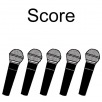 Good Excellent Value for Money Well designed Well Built All the accessories you'll need Bad Could have clips for a few more mics Website http://aus.rodemic.com/ Initial Thoughts Outside of Japan Zoom is virtually unknown as a company, but their entry into the hand-held digital recorder market is about to change all that. The Zoom H4 is one of the cheapest units on the market and yet it still includes features such as twin balanced XLR inputs, phantom power and multi-track recording functionality. The H4 is going to change the way people think about portable recording. I was living in Japan when I first saw the Zoom H4, in fact the first one I bought I sent to my brother in England as a birthday present; it was a couple of months later before I picked one up for myself. Initially I was concerned with its size because I already owned an Edirol R09 which was easily pocket sized and the H4 was much too big to carry in my pockets. Also initially when I used the H4 with its built in mics I found them far more susceptible to wind noise the the mics on the R09. Where the H4 really started to come into its own was when I used it for serious recording. The Zoom H4 has 2 modes of phantom power and so was perfect for using with my Sennheiser MKH60. It completely removed the need for a bulky inline phantom power unit I had been using. It also had balanced XLR inputs which neither the R09 or my old Sony portable DAT recorder had. The increase in quality was sudden and very obvious. After only a couple of recording sessions using the H4 with the MKH60 I realized I had entered a phase of my sound recording. Not only was the H4 a better record than I had previously used, it was also smaller and lighter and made being mobile much easier. The H4 comes packaged with quite a few useful accessories, the most useful for me was a mounting plate with a screw thread hole to attach the H4 to a camera tripod. Although I did find it interesting that they chose to match the thread on a camera tripod rather than a standard microphone stand size, I later came to appreciate this feature. For a start a camera tripod is much lighter and more compact than a microphone stand so was another plus for mobility. Also I adapted an old broken tripod I had and mounted the attachment head onto the side of my boom pole allowing me to mount the H4 directly onto the boom pole just beneath the microphone mount. This allowed my entire recording setup to be mounted on a single pole. This was so useful and convenient that I still use this exact system 3 years later. The unit itself can be used as a four track recorder, but only by recording up to two tracks initially and then a further two tracks at a later time. This is not a feature I have ever used. Many small digital units like both the R09 and H4 include a range of software features that I find somewhat pointless. Being able to add reverb and other effects to sounds on board seems to be pointless to me as there is almost endless software available that will serve this same purpose. I would rather a good basic recording unit that does its primary purpose well rather than a bunch of extra features that I suspect few people will use. The H4 uses SD memory cards for data storage, and depending on what recording rate you are using you can recording significant amounts of data on even a 1 gig card. Available recording formats are 44, 48 and 96 KHz wav file and mp3. I tend to use 48KHz most times unless I am recording sounds with extreme high frequency material such as breaking glass or something similar. The battery life on the H4 is quite good. I use rechargeable batteries and a four gig SD card at 48KHz sample rate will allow about 4-5 hours of recording. The batteries will usually last this long with no issues allowing for continuous recording if needed. The interface is fairly straight forward although I occasionally have trouble remembering which sub menu contains the functions I am after. When recording with both inputs it is possible to set the input levels separately via a menu system and there is also a 3 stage switch for each channel that allows a rapid drop in input level. I am not sure I like this system as it is very fiddly to adjust in the field. Technical DataRecording Format: WAV(Quantization: 16 / 24bit, Sampling frequency: 44.1 / 48 / 96kHz), MP3(Bit rate: 48 / 56 / 64 / 80 / 96 / 112 / 128 / 160 / 192 / 224 / 256 / 320kbps / VBR, Sampling frequency: 44.1kHz) ●Playback Format: WAV(Quantization: 16 / 24bit, Sampling frequency: 44.1 / 48 / 96kHz), MP3(Bit rate: 32 / 40 / 48 / 56 / 64 / 80 / 96 / 112 / 128 / 160 / 192 / 224 / 256 / 320kbps / VBR, Sampling frequency: 44.1 / 48kHz) Metronome: 5 sounds (Beat: 0/4 - 8/4, 6/8, Tempo: 40.0 - 250.0BPM) A/D Conversion: 24bit, 128times oversampling D/A Conversion: 24bit, 128times oversampling Signal Processing: 32bit Recording Media: SD memory card (16MB - 2GB), SDHC memory card (4GB - 32GB) Display: 128 x 64 pixel, back lit LCD Balanced/Unbalanced Input: 2 x XLR-1/4" phone combo Jack Input Impedance: balanced input = 1kΩ balanced / pin 2 hot, Unbalanced input = 480kΩ unbalanced Input Level: balanced input = -20/-30/-40dBm, Unbalanced input = -10/-30/-40dBm Phantom Power Supply: 48V, 24V, OFF Buit-in Stereo Mic: Unidirectional condenser microphone (Gain switch: +6/+20/+30dB) Maximum SPL: 120dB SPL Line Output: 1/8" stereo phone jack (Output load impedance: 10kΩ or more, Rated output level: -10dBm) Headphone Output: 1/8" stereo phone jack (Output level: 50mW into 32Ω load) USB Interface: Mini-B type (USB2.0 Full-speed compatible), Mass Storage Class operation / Audio Interface operation (16bit, 44.1kHz / 48kHz) Battery Requirements: AA size (LR6) battery x 2, or Supplied AC adapter AD-0006 (DC9V/300mA/center minus type) Battery Life: 4 hours recording, 4.5 hours playback Dimensions: 70(W) x 152.7(D) x 35(H)mm ●Weight (without batteries): 190g Supplied Accessories: AC adapter (AD-0006), USB cable, SD memory card (512MB), Wind screen, Tripod adapter *0dBm=0.775Vrms Later Observations I'm still not happy with how lightweight the H4 feels, but it is really just aesthetic. I have used this unit solidly for many years now and its still working well. General wear and tear have not been an issue as far as performance is concerned. This was my main recording unit and probably still would be if it hadn't been replaced by its successor the H4N (we'll get to that later) I was lucky enough to buy the H4 in Japan where I paid the equivalent of $250 dollars Australian for it. (about $200 US at the time) When I returned to Australia 18 months later I found they sold for over $700 in Australia, so I guess value for money really depends on where you are buying. The only disappointment I really had with the H4 was that the built in microphone were a little too sensitive for outdoor use. Apart from that I really consider the H4 to be the herald of the new age of low price digital sound equipment that can allow pretty much anyone to record high quality audio pretty much anywhere. (It may not have been the first, but I think it was the best) Even after purchasing the newer model I still keep this unit in my kit bag and use it any time I need a second unit running. Literally thousands of sounds in The Library were recorded on this unit. In the real world As this was one of the first digital recording units I purchased it was the device I used for much of the recordings I captured in Japan. One in particular was a bird that I had been stalking for months. I still do not know what species of bird it was, only that it only came out at night and produced a clean clear whistle call at regular intervals. The H4 allowed me to capture very clear recordings of this bird with very little hiss or unwanted noise. This is often difficult when trying to record sounds in a natural environment as sound sources such as birds and animals can be quite far from your microphone. Verdict Good On board phantom power Duel Balanced inputs Well equipped Bad Input level controls are fiddly Feels very plasticy and fragile Website www.zoom.co.jp Initial Thoughts The Sennheiser MKH60 was designed to work, to work for a long time, under a variety of conditions and to provide good quality sound capture. Condenser microphones are traditionally more fragile than dynamics and yet as a shotgun mic the MKH60 has a need to be able to cope with a wide variety of recording situations.. The MKH 60 has been my main workhorse microphone for years, and is still one of my favorite pieces of equipment. Based on an RF condenser the MKH 60 provides excellent sound capture capabilities with very low noise levels. It’s sturdy and deals well with humidity and condensation. From a usage point of view the only issue I have is that sometimes it’s too sensitive at capturing what it’s pointed at. I have often found I have inadvertently recorded background material that I would not have considered noticeable because it was so far away, but the sensitivity of the mic has allowed it to capture distant sounds. This is far more a criticism of the user than microphone itself, but it can take getting used to. At 125 dB the maximum SPL levels are quite adequate for a large range of recording purposes, it is important to be aware of the high-pass filter when recording instruments, especially bells, cymbals and similar metal instruments. If active it can result in distortion of high frequency signals even though the input signal appears fine. I would not generally use or recommend the MKH60 for instrument micing, while it is capable of recording a signal from an instrument it is not what it was designed for and there are many other far more suitable choices. The MkH 60 does not have the capability to provide its own power via battery so as such it requires phantom power from the recording device of from an in line power supply. As most digital recorders these days include phantom power this is a very minor issue. As it is my main tool for recording sound effects I usually have the MKH60 mounted in a shock mount and wind shield system. This prevents the two main issues of vibration and wind being a problem when recording. When mounted in this way the MKH60 is excellent for both sound effects and dialogue recording. As a hypercardioid mic the MKH60 takes a little practice to be used for dialogue recording especially when using a boom pole. It can be quite easy for a sound source to move off target if the user is not paying attention, this can result in sound quality differences as sounds captured at an angle will be colored differently. Essentially the MKH60 will record what you point it at, even at considerable distance, but because of this you need to make sure you aim it correctly. Technical Data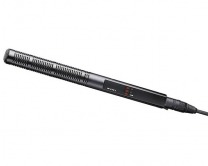 Later Observations Having owned and used an MKH60 for nearly 6 years I am fairly confident to say this is a good mic and well worth the money spent. I always treat my equipment carefully but regardless things get dropped and knocked around. The MKH60 still looks practically new and functions as well as it ever did. I think I have a better understanding of its limitations now and I would still not recommend it for instrument micing, but then I doubt it was ever designed for this purpose. It is however an excellent mic for location sound recording as well as vocal recordings on location or on set. It has been a good and consistent piece of equipment that I have grown to rely on. In the real world It is difficult to think of one good example of this microphone being used int he real world. I have had this mic for many years and at the time of writing this the library contains over 17,000, 75% of which were captured using the MKH60. In many ways the results speak for themselves. This microphone has been a sturdy workhorse for nearly a decade and is something I rely on without giving it a second thought. It is by no means perfect for every situation, but what it does, it does very well. Verdict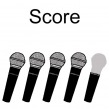 Good Built to last Low noise levels Bad No internal option for power Not Cheap Website www.sennheiser.com Initial thoughts The AKG is simultaneously one of the most unusually shaped and yet recognizable microphones on the market. Designed to mic kick drums in drum kits the D112 has earned a reputation worldwide for being physically tough and able to handle anything a kick drum can throw at it. With a maximum SPL level of 160dB the D112 is also a very useful piece of equipment for a sound designer. As a dynamic mic the D112 should be fairly tough anyway, but being built for live performance gigs and to handle the stresses of drum micing the D112 looks and feels like it could fall off a cliff and still keep working. I haven’t yet tested how it would handle a cliff fall, but in all other ways the D112 has handled extreme conditions and performed well. So far mine has been attached to the bottom of cars next to the exhaust, placed at the muzzle of a variety of firearms and a canon and been locked inside a car wreck as it was smashed with a sledge hammer. The high SPL capabilities of this mic has allowed me to capture some truly excellent material that most other microphones simply could not have captured. This is a purpose built piece of equipment and will definitely not be the best choice for all situations, as such I would not recommend it as your first or even second piece of equipment, but for anyone who ever plans on recording sounds with extreme sound levels this is a must have. It does have a very short range of sensitivity, so it needs to be placed quite close to the sound source; this however means it is very unlikely to capture unwanted background noise. As a dynamic mic it can tend to be slightly slower to respond than condenser microphones, but in any situation where you would need to captured a range of frequency material I would always recommend using at least two microphones anyway. The D112 works best in combination with other mics. It can capture the loud and low frequency material and add a good weight to your recordings, but I would usually accompany it with a second mic to capture the other extremes of frequency and amplitude. Technical Data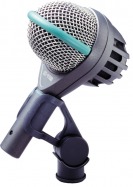 Later Observations Initially I think I didn’t use my D112 to the fullest of its capabilities. I purchased one because I knew it would be excellent for high sound levels and low frequency material, but I got into a habit of being lazy and not using several of my mics as well as I could. I am happy to say I have since corrected that poor habit, and the D112 goes with me everywhere. It certainly doesn’t get used everyday, but when it is needed it provides a function that would be difficult to find elsewhere. Mine has been dropped scrapped and burnt in the line of duty, but apart from minor aesthetic marks it still functions as if it was brand new. In the real world I purchased the AKG D112 purely to have a microphone that could cope with massive sound levels. It's track record so far has been very good in that regard. This mic has quite literally been at the business end of a big gun.September 2009 Tamninik, Victoria. A 100 year old 100mm Howitzer is going to be a big challenge for any mic at any distance, but to be placed within a couple of feet of the muzzle is a good way to really test it's capabilities. Verdict Good Practically indestructible Reasonably priced Purpose built Bad Limited range of uses Website www.akg.com This is effectively a mini review. I purchased the H3 many years ago and I never seemed to be able to use it correctly. The sound was always corrupted but being such an unusual piece of equipment it was difficult for me to know what to expect, so I was unsure if there as an issue with the equipment or my expectations. I was unable to take any action on this as shortly after I purchased the H3 I moved to Japan for several years. I was extremely lucky that when I contacted the manufacturers several years later they were prepared to help out. This was far more than I expected as it had been years since I purchased the device. Comparing the H3 with its newer cousin the H2a XLR there are some immediate differences that are worth mentioning. The H3 only had a mini jack output and so the quality of its output was not quite as good. Also it required an internal battery for power where the H2a now uses phantom power. I did like the more direct diaphragm access on the H3, but I suspect the metal shell of the H2a is much stringer and will increase its longevity. The biggest feature of any of the Aquarian products is they are excellent value for money. At only a few hundred dollars they become a piece of equipment that every sound designer should have, and compared with other commercial hydrophones they can be as little as 10% of the cost of other underwater mics. Website www.afabsound.com/ Initial Thoughts The Rode NT4 was one of the first duel capsule stereo microphones on the market. Allowing the user to work with a single mic to record accurate stereo images adds a new tool to a recordists arsenal. The inclusion of optional internal battery power and different output lead sizes makes the NT4 a versatile tool. I had used some Rode mics before I purchased the NT4, namely a pair of NT3 microphones which I had hanging up in the lighting rig in a theater to capture a live show. The NT3s performed very well. They were a considerable distance from the stage in height and yet they captured an excellent range at good quality. At the time I purchased the NT 4 I wanted a single stereo microphone for various applications. To be able to record live performances in the same way I had with the NT3s was definitely one of them, but I was also hoping to get a quality microphone for capturing outside ambiance in stereo. The NT4 is an excellent package as purchased. It comes in a hard plastic road case that does a very good job of protecting what’s inside it. (In fact I now use this case to house three microphones) It includes the microphone and a special mic clip because the NT4 is much bigger than standard mics. It also includes two cables one that splits into two XLR leads and a second one that ends in a quarter inch stereo jack which is very useful for people using any of the more recent hand-held digital recorders. Lastly there is a large foam pop shield included that fits over the two stereo capsules. Overall its very good value for money, although I do have to say, shop around and don’t be afraid to haggle a little. The difference in the recommended retail price, the price I was initially offered and what I actually paid for the unit was quite considerable. Although I suspect you could say this about pretty much any piece of audio gear. From a performance point of view it really depends on what you are trying to do with the NT4. (like most things) I found that for inside recordings of live musicians it is an excellent microphone. I’ve recorded everything from choirs to acoustic wind instruments right up to giant Japanese Taiko drums and as long as you set your levels right and position the mic carefully the NT4 will reward you with a good recording. I found the sound particularly warm and pleasant when recording voice and woodwinds. It is also quite good for general ambiance in an interior environment. The sound quality and frequency range is good for both uses. The convenience of duel power from either phantom power or a 9volt battery housed within the unit is another indication of the attention to detail that Rode appear to take with their designs. Outside becomes another matter. I realize that most microphones are susceptible to wind noise, but the diaphragms on the NT4 seem to be very prone to wind issues. The first real attempt at outdoor recording was in a swamp near Adelaide and even though there was barely any wind on the day the NT4 struggled badly. I was using just the foam wind shield supplied with the unit but any slight breeze resulted in a loud crackling that made any recordings unusable. I have since bought a fluffy wind shield to use over the pop screen for added wind protection, but in general I do not use the NT4 outdoors. This is disappointing as the built in mics in my hand-held units are better able to cope with wind without a windshield than the NT4 can with its foam cover. Build quality is excellent and overall you feel like you are using a well made precision piece of equipment. I generally like Rode products and their approach to building quality equipment without it being unnecessarily over priced. They are also usually very well equipped and include many of the accessories that other companies charge extra for. Technical Data Later Observations I have come to believe that maybe my issue with the NT4 is less what it can't do and more that I have been using it for the wrong purpose. As a microphone for inside use it has an excellent sound, which is exactly what it was designed for. Coping with the issues of recording outside is something that many microphones would struggle with so to expect the NT4 to be any different is probably doing it a disservice. I only have a few pieces of Rode equipment currently, but they are all excellently designed and constructed and serve the purpose for which they were designed very well. So the only conclusion I can come to is that if the NT4 does not cope well with outdoor recording then it was probably never designed to do so. In the real world Revising slightly on the previous comment, I now believe that the NT4 was produced before the equipment it needed to really be a flexible microphone. Having now used an NT4 safely positioned inside a Rode blimp cover I can say that not only is the NT4 capable of recording outdoors, but that it can produce excellent results. The Blimp is not an optional extra when using this mic outdoors, but once that limitation is accepted the NT4 has quickly become a regular part of my location setup.  Good Rode's typical high quality of design and construction Very good for capturing live music indoors Great value with all the accessories Bad Simply can’t cope with being used outdoors without major wind protection Website http://aus.rodemic.com/ Initial Thoughts Edirol/Roland have been producing electronic audio equipment for decades, so it is not unexpected that they are one of the first to produce a lightweight pocket sized recorder that won't break the budget. The R09 is one of the cheapest hand-held digital recorders available, but does it stake up with other units on the market? The R09 was the first digital recorder I purchased shortly after they were released. Previously I had used a portable DAT unit for all my location recording. The DAT weighed in at around 5kg and was the size of a large book, by comparison the R09 is closer to 200 grams and fits in coat pocket. These two factors alone were a huge step forward in location recording. The R09 also uses SD memory cards as storage media. This is now the format I use with all my current devices. Its ease of use/reuse, low cost and quality makes this media format one of the best advances in recording in years. The device itself is compact and quite well designed the interface is easy to use with standard play, stop and record buttons. The LCD display is a little small but does manage to pack in all the needed information and is also back lite when receiving inputs. The built in mics are actually quite good, but like most microphones require some screening when used in an environment with wind. The one main area where the R09 falls down is its lack of balanced inputs. It does have mini jack inputs for both line in and mic in, but the lack of an XLR input prevents this unit from being used as a serious recorder int he field. I do however carry one on me at all times as a backup or to allow for opportunistic recordings. (And I have captured some excellent material because of this) The build quality of the R09 is a little on the light side. It is entirely plastic and feels hollow to hold, while an aesthetic feel is not a necessary requirement of such a device I think it would inspire more confidence as a field unit if it was a little more robust. Compared with other hand-held units it is also very light on accessories in its basic form. When I purchased the unit it came with just the unit, a manual and a USB cable. Other hand-helds on the market include cases, power supplies, wind shields and other accessories as standard, so could perhaps be seen as better value for money. Technical DataTracks: 2 (Stereo) Signal Processing: AD/DA conversion: 24 bits 44.1/48 KHz Memory Card: SD Card Audio Inputs: Internal Stereo Microphone, Mic Input (Stereo miniature phone type) Line Input (Stereo miniature phone type) Audio Outputs: Phones (Stereo miniature phone type) Nominal Input: Mic Input -36 dBu, Line Input 0 dBu, Digital out connector (optical miniature phone type) Input Impedance: Mic input: 20k ohms, Line input: 17 k ohms Frequency Range: 20 Hz to 22 KHz Display: 120x64 dots OLED display Power Supply: AC Adaptor, Alkaline dry battery AA type Battery Life: Playback: approximate 5.5 hours, Recording: approximately 4 hours Current Draw: 360 mA Width: 63mm 2-1/2inches Depth: 102mm 4-1/16inches Weight: 0.1 kg 6 oz 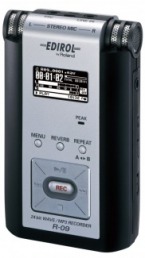 Later Observations As I mentioned previously I now carry the R09 with me almost everywhere. This is not because it is the best recorder I own but because it is the smallest and most convenient. having said that if I didn't think it was capable of reliably recording a range of potential material when I needed it to I wouldn't use it. One of the biggest issues I have with all current digital recorders is the amount of time they take to go from power on to being able to record. 15 seconds may not seem like a long time, but when something dramatic is happening in front of you, sitting watching your recorder boot up, say "hello" and take a quarter of a minute to be ready it can be extremely frustrating. I really wish all the makers of these units would have an emergency "crash start" mode that enabled the most basic record function but was up and running in 5 seconds. The R09 was also more expensive than some better equipped unites that were released around the same time. In the real world I purchased the R09 when I was living in Japan and as a result I captured a range of material using this unit. Like any device the proof is in how it deals in the real world. Northern Japan, Ninnohe bullet train station. I was waiting for the Shinkansen to Tokyo when I realised there was an express due to pass through within the next few minutes. This was a great opportunity to capture a Shinkansen at speed. They do reduce speed from their maximum 250kph when passing through a station, but not by a lot. This would still have been travelling at over 150 kph at the time. The recording speaks for itself Verdict Good Small and lightweight Good battery life Bad No Balanced inputs Very few accessories included Lacks features for its price Website www.edirol.com/ |
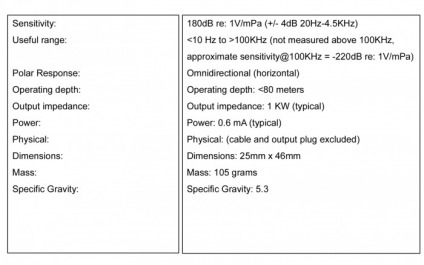
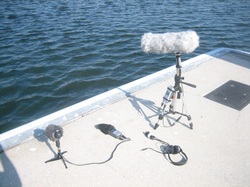
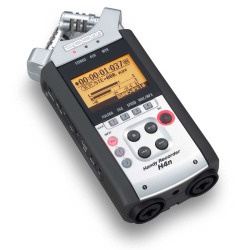
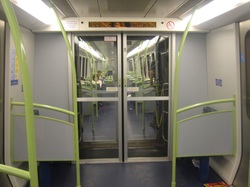
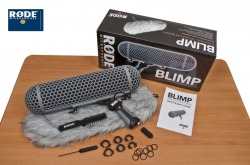
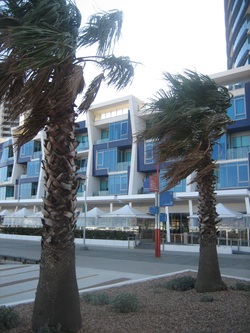
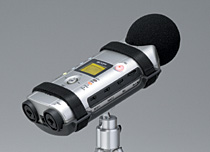

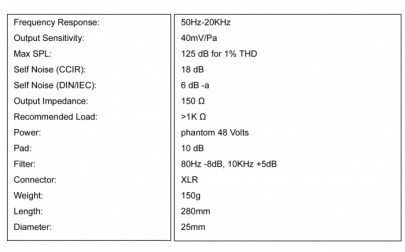
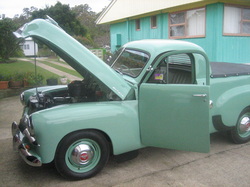
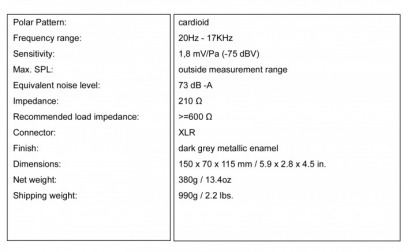
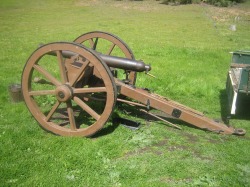
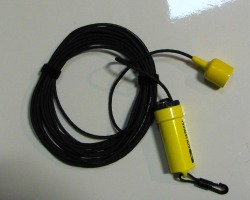
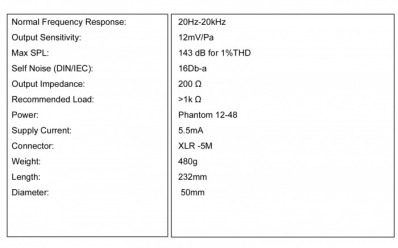
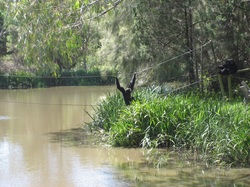
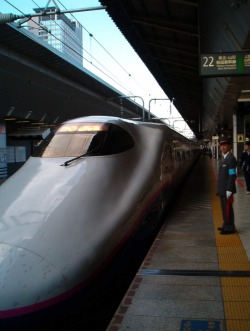
 RSS Feed
RSS Feed
